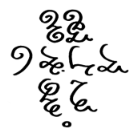All Activity
- Past hour
-

En Route To Atlantis DAW Playback Video
AngelCityOutlaw replied to AngelCityOutlaw's topic in Orchestral and Large Ensemble
Thanks Mark - Today
-
- 3 replies
-
- orchestral
- movie music
-
(and 1 more)
Tagged with:
-
Recently arranged and composed this Rebrand...............Within the Allotted Time Frame , set by the Network.
-
- original
- written & arranged
- (and 2 more)
-
FILMSCORE changed their profile photo
-
guy500 joined the community
-
-
- original compostions
- written & arranged
- (and 1 more)
-
chopin started following String Sextet in G-flat major (My best work in my life up to date!)
-
I don't think I've listened to this in full yet (as one complete work). A lot of pentatonic influence, which makes the intro to your fugue at 5 minutes in a lot more noticeable since you break out of pentatonic briefly here. It's fantastic in building tension, and a great foreshadow to the full fugal section that comes later. There's also a lot of interesting key changing going on in the first 5 minutes. One minute we are in one key, then all of a sudden, we are taken into a different key. It's a great way to change the focus and break up the momentum! The intro to your 2nd movement is powerful. I think this may be one of my favorite parts of this piece. This is about 16 minutes in. The part at 16:55 where the violins take over the melody, is just mind-blowing to me. I love buildup like this. I think this works because not only is this a great melody that you are using, but the harmonies are not overly complex, and your modulations are as smooth as butter. Also in terms of smooth vs abrupt key changing, the way I look at it is this. When you change key that feels more abrupt, it's equivalent to changing chapters in a book. That's why this type of key changing can be effective if used strategically. I'll list some more notable parts of your entire work: 19 minutes in, this is starting to sound a little like Mendelssohn. I think this has to do with the style at this particular section. 22 minutes in, one of your more dissonant moments, maybe a little fantasy-like here. 24, beautiful recap of main melody, a great reminder to the listener of what this piece is really about! 25:40, this is an interesting part, because this sounds like a call and response technique that you used here. Again, this is a great way to break up momentum because its out of character for this piece. 26, you know how I feel about the fugue and last movement since I've left reviews about them, but the fugue is probably the most complex part of this piece. This is why I featured part of that movement in my highest viewed video to date, on how to change key. A fantastic and highly emotional piece! There are a lot of great techniques used to keep the listener focused, and to help them follow your journey. For example, it's not just a fugue or, it deviates from normal functional harmony. But some parts have functional harmony. There's a lot of usage of the pentatonic harmony that you made excellent use of it in your story, but you deviate from that that too. Overall, this highly organized work, and strategic usage of dynamics, rhythms, and smooth vs abrupt key changing tactics are what brings this piece together.
-
Vijay Jain joined the community
-
Jqh73o started following Nocturne in Ab Major
-
I completely agree with the previous comments about adding more melody and giving the sixteenth notes more of a place in your composition, developing the idea and possibly fitting in a coda. Moreover, I think that splitting the accompaniment into the two staves looks rather ugly how it is done right now, and most importantly it makes difficult distinguishing melody notes from accompaniment ones. Can you create two voices in that stave? I really liked the dreamy harmonies employed here. From what I heard here I believe harmony is your strongest field in composition. Perhaps as a future goal I would recommend adding some more modulation and even thinking about implementing non-chord tones into accompaniment figures. Thanks for sharing Manuel
-
Mooravioli started following Moment Musical in A-flat major
-

Moment Musical in A-flat major
Mooravioli replied to Henry Ng Tsz Kiu's topic in Piano Music, Solo Keyboard
Hello Henry, A very Schubertian piece you have here, with effective shifts between different textures and meters. Lots of smooth voice leading in your chorale too, though I detect a few parallel octaves in the inner voice, which is unimportant in the bigger picture. I see you are quoting the theme from your 1st "pastoral" sonata, are these two pieces (intermezzo and musical moment) suppose to be a summary of your old style? I don't think you are striving for too much originality here, but I do hope you translate the originality you've achieved in your sextet into your smaller pieces. That way, you will be able to build a style that is recognizable across many genres. -
Henry, you ought to be immensely proud of yourself! I only joined recently and so i haven't been here for the whole journey of this piece, but I'm glad i can be here for its culmination! You clearly put a huge amount of effort and of yourself into this piece and it really comes through. You have such a unique style and i can only feel inspired and in awe at you and this great achievement. I had heard of Tao before, but reading your outline and listening to this piece in full really opened up some new corners of my brain. Do you plan on trying to get this performed publicly, or at least recorded?
-
At long last, your best work to date is not only complete, but fully realized in its flawless entirety. More than 3 quarters of a whole hour, in which the magnificence of your music pours an entire saga, perhaps the single greatest musical achievement of this age of classical music, into our minds, hearts and souls like nothing else heard or listened to before. The mastermind behind the enormity of this awe-inspiringly sublime task shall be remembered far beyond our days, in the far future where the calamities and uncertainty of the early 2020s will have long been forgotten, maybe for good, or perhaps replaced by newer perils and conflicts. We will never have a way of truly knowing, but the greatness of this outstandingly rich and profound sextet turned symphony, I say, shall never truly be forgotten, even should the misfortune of a thousand more disasters strike the Earth and sow the greatest miseries upon millions: for even the sadly lesser known among the greatest works of art have survived similar catastrophies and triumphantly resounded in perpetual echo through the halls of time retold: we still admire them and the wonderous capacity of their creators to produce such exquisite and intricate music to outlast even the world's direst woes; and most important of all, they exist beyond time and space: one copy can be lost and forsaken for decades and centuries at a time, but eventually one kind and gentle soul shall see through the dust in the cover to find the most utter perfection and beauty ever conceived. That much was taught by Mendelssohn when he resurrected Bach's monumental legacy from the most unfortunate, albeit gratefully temporary, of all the oblivions in the history of classical music, and brought the works of the mightiest and most venerable of all composers who ever lived to light and eternal glory for those who would come thereafter to rejoice and marvel at ever since. Thank you, Henry. So many words come to mind when I listen to your work that hardly any of them could be written as I process it all. But even so, your music has changed me: as a student of Bach, as a musician and most importantly, as a person. You have taught me that greatness is not only to be found in the glories of the past alone, but is in fact attainable should we strive for it, work hard enough and keep dreaming of a day when we are remembered for it: that shall be my predicament from now on. As for you, you have already sown the seeds and watered the fields for the bounty of those very fertile crops to flourish, and that wonderful future to come to be, when your music is as remembered and listened to as it is praised and venerated: your work has touched the very Heavens with its power and shall now bask in the light of its eternity for ages upon ages to come. That is the goal we all should aspire to in our lives, and you have shown us the way: even now, it too is possible.
-
This is the final draft of my best work up to date in my life, String Sextet in G flat major. Posts of seperate movements have been posted before and I'm not gonna repeat it here. If you're interested in the music details, pls check the following YCs: 1st Mov: 2nd mov: Here is the score and YT link of the work: String Sextet in G flat major.pdf Here is the structure of the work: (*denotes parts I love). The two movement structure is inspired by Mahler's 8th Symphony, so the second movement is proportionally much longer than 1st movement: 0:00 Opening credit and structure 0:11 1st Mov, 1st Part: Tao Primo (*3:35-3:47 nice bridge, **4:40-5:26 nice chromatics) 5:34 1st Mov, 2nd Part: Minore, a fugato, some little challenges (**9:40-10:10 nice retransition) 10:10 1st Mov, 3rd Part: Tao Return, a triple fugue and ending (falsely) (*11:45, **12:46 till the end) 14:48 2nd Mov, Lamentoso: Denial of Tao and realization of the realistic World full of tragedies. (*16:54, *19:11, ***19:44 sounds like my version of Bee's op.131 finale!, ***23:38-25:15 most emotional passage for me) 26:33 2nd Mov, Fugue a6: Objectification of emotions and reason. The most difficult passage for me to write technically but easiest emotionally. (**28:10-28:42 includes a 6 part stretto of 1st subject and a nice C minor modultation quoting my own Clarinet Quintet, ****30:07-31:27 a 6 part stretto of 2nd subject and one of my fav. section in the entire work with the very beautiful C minor passage, ***32:58-34:31 nice turn to pentatonics and nice disappointment) 35:03 2nd Mov, The Return. Start picking up the real self and soul and connect oneself with Tao, finding self equals to finding Tao. “I Six Books explain me and I explain Six Books (Lu Jiuyuan)”(*35:03-35:36 try to regain energy, **37:05,37:37,38:11,38:43 Nice color, **39:12 nice folk melody, ***39:15-40:15 Nice pizz.! And a very nice snap pizz! **** 40:46-41:46This passage leaves me in wonder. I don't know how do I compose this, **42:17-43:23 Nice appetizer fugato, ****43:24-44:53 Grand Climax!, ***44:54-45:41 Nice heterophonic passage which ignites my creative power for this movement, *****45:42 till end Pefect ending) This work was first inspired by Chinese Philosopher Tang Chun I's Realm of Heavenly Morality in his monumental book, The Existence of Life and the World of Spirituality, in April 2022. I wanna felt and descibed it hence I finished the whole 1st mov. I thought it's enough, until I met with my dedicatee Johnson, my respected philosophy professor Dr. Tao and my friend Merina in April 2023, and I knew it's not enough since without pain Tao isn't possible at all. After some painful incidents in 2024, I am finally able to finish the whole piece in March 2025. For me this work is about Tao, Tao lost and Tao regained. Since this would be the final post on the Sextet, please let me acknowledge people I would like to thank along my way of composing. This work is dedicated to and in memoriam Mr. Johnson Ho https://youtube.com/@beingintheworld?si=9Ch3hnk1UtluHTRF who sadly passed away in July 2024, and it's a regret the work couldn't be finished when he's alive. I would like to thank him for his great inspiration especially his postive way to deal with his illness. I would like to thank Dr. Tao, without his teaching esp. the one on the book Buddha-nature and Prajñā (?) did I realise the importance of pain and human suffering to morality and humanity, and probably won't have enough philosophical basis for this work. I would like to thank Mr. Vince Meyer @Thatguy v2.0, who acts as my musical Virgil, providing so many inspiration particularly in this piece's fugue and different motivic usage, and also make this great recording. Also, thank him for his encouragement when I kept saying I could never finish this piece. I would like to thank Dr. David Goza http://www.youtube.com/@David_Goza ,without his videos on YT I would never able to improve my own writing. I would like to thank Merina, Yvonne, Arjuna @expert21 and Peter @PeterthePapercomPoser for staying with me in my difficult times. I would like to thank Mike @chopin for his idea to go back to medieval texture in the Return. I would like to thank Luis @Luis Hernández which helps me solve the harmonic progression btw tritiones. I would also like to thank my ex-boss's mistreatment, as she teaches me a great lesson and the pain helps me reflect a lot which shows here. Also, thanks to everyone who has listen to this piece before and comments, as they help me a lot. Thank you Young Composers Forum and @chopin for giving me a chance to grow musically. Thank you for everyone who has commented on the work's parts before, I especially love the comments by @Fugax Contrapunctus @Giacomo925. Last but most importantly, I would like to thank my mum and family. Without their love I would probably fall much deeper and won't be able to finish this piece at all. Thank you!! P.S. One interesting fact on the piece is that it stays longer in F sharp minor then G flat Major….. Henry
- Yesterday
-
Laissez Vibrer on String instrument's STOPPED pitch?
Quinn replied to ARCMusicPublishings's topic in Composers' Headquarters
The open strings on current stringed instruments are the only things that allow any laissez vib at all. Pizzicato is notoriously just a thud - the exception being on the double bass which can sustain for a moment such that for a true 'sec' the string has to be damped. The strings also sustain briefly when the bow is lifted, without damping. (The sample library I use includes the "release" of every instrument's articulation. With all strings except the double bass there's no noticeable sound after the release of the bow.) -
Fugue in A minor(From the Langloz Manuscript)
Fermata replied to Sonata_5's topic in Piano Music, Solo Keyboard
It has parallel 8ves between mm. 4-5, 10-11 & in m. 13 between the bass and the uppermost voice. In m. 12 the last note of the middle voice should be an E crotchet because the G also appears as a passing dissonance in the bass. The tail of the subject in m. 5 should lead to the same countermelody introduced in mm. 2-3. In m. 7 you wrote a 6 4 chord on the 2nd beat; there should be a D in the middle voice according to the figures given. - Last week
-
This is a piece following condensed sonata form written after finally defeating writers block for a few weeks. It was inspired by a bunch of forgotten about, cracked, ancient (possibly Roman) tombstones that lie on the side of a path in southern Spain, most of them were used for building two hundred years ago, but some lie there abandoned, peeking through the dried grass While I plan to revise it, it will not be in the near future, and it is finished how it is. I would appreciate feedback of any sort Here follows a guided analysis Introduction: b1-10 A monophonic chant presenting the main motif of the piece (ascending fourth), followed by the presentation of the ostinato for the first theme, which contains the second motif (three stepwise descending notes) Exposition: First Theme: b11-26 In Eb Phrygian Dorian, based on the shape of the opening chant, but also including motif two in the melody Transition: b27-34 Modulation from db to Bb Second Theme: b35-53 In Bb Acoustic, focusing in motif two but also including motif one Development: b54-92 Begins in E minor as a transformation of theme 1 in the lower register, with motif 1 serving as the accompaniment, it quickly gains harmonic instability and turns into transformation of theme 2 in A# minor, that turns into a restatement of the opening chant, but in C# minor, working as a false recapitulation. Instead of turning into a recapitulation of theme one, it goes back to the texture of the beginning of the development, but gains harmonic instability and serves as a way to lead back to the recapitulation Recapitulation: Second Theme: b93-108 In Eb acoustic, now triumphant Transition: b109-118 Reaches db minor and develops motif 1 mostly in its rhythmical shape, modulation back to Eb Phrygian Dorian First Theme: b119-128 Eb Phrygian Dorian, funeral-like and devoid of ornamentation Coda: b129-132 Opening chant, quoting Debussy’s Brouillards Thank you in advance Manuel
-
@Henry Ng Tsz Kiu @PeterthePapercomPoser Thank you for listening. I understand that it might take some adjustment to appreciate the sound. It also touches a more dissonant, or atleast uncommon range in the 31-EDO system. Glad it is an enjoyable listen. Have a good day!
-
Updated score now with phrase markings in the voices denoting when to breathe. Though in m. 9-13 i left them out, because the singer could either breathe between 13 and 14 or after "way" in 11
-
@PeterthePapercomPoser Thank you for another review! Many of the annotated issues may be trivial but they're things that bug me whenever i've looked back at this piece The notes you gave on the annotations and the couple of other things really help me Yes, excuse me, I meant adding thirds and fourths or fifths and sixths, just to make the piano's solo bit sound richer Sure, if you would! Thank you again for the kind words and feedback. I think i'll post a revised pdf here in the replies with phrase markings in the voice as you suggested
-
Hi @user011235! I was about to go back to your Overture in G and move it to the Incomplete Works forum but decided against it because it doesn't seem like an incomplete work. It's just a juvenile piano work. This piece too I feel like actually sounds complete and should go in the vocal music forum - I can move it there if you want! This piece is quite wonderful btw. Once again, I feel like most of your annotations are trivialities. I think whether you put accents in the beginning is a matter of how you want your rendition to sound and how your program handles them. A person performing this on piano would know to bring out those notes slightly because they introduce a new chromatic note. Even just the fact that it's a chromatic note naturally brings it out and it's on a strong beat so yeah. At this tempo, the 16th notes in measures 11 and 31 are fine I think and real performers would probably take those phrases at a slight rubato tempo or slightly slower at least. I think the beam of the top voice in the left hand in measure 18 could be split between beats 3 and 4 to make it look nicer but other than that it's not really problematic either. At measure 19, I'm not sure what you mean by double stops. Double stops are chords that are usually played on two different strings on string instruments. That term is not usually used in piano music since you're not stopping the strings to produce the sound with a different length of string. Do you mean chords harmonized in 6th and 5ths? I didn't really notice that that passage lacked harmonic definition so unless you plan on beefing up the harmony throughout the rest of the piece to continue its consistency then I'd advise against it. In measure 26 I vote for it to be a grace note, but you're the composer - if you made it like two 16th notes, to me the 16th note motion might imply that the rest of the piece (at least the left hand) should be in 16th notes as well as a kind of variation of the beginning. I think measure 34 is a wonderful chromatic moment! Not too dramatic at all - or rather it's a very much welcome drama. Measures 44 - 46 I think your idea of using the phrasing marks as you have annotated isn't confusing at all and would quite natural for the pianist to interpret. What you could also add is phrasing marks for the voice which I think is way more important as it would let the singer know when you expect them to breathe and how long you expect them to sing without interruption. Thanks for sharing this wonderful pastoral song!
-
This is a setting of Robert Frost's beautiful poem that I wrote around Easter 2018. Included is an annotated copy with things i'm unsure about. Any feedback is appreciated
-
Thanks for the advice! The piece is somewhat constrained to what is easy for me to play technically at the moment
-
Very tender piece and performance, well done. My only suggestion would be to add a little more variety. A ton of variety isn't necessary in a short piece like this, where the whole thing feels like a single thought. But i would have liked to hear a little change from the pattern of simply one melody note every half measure. And I would've liked to hear those sixteenth notes last more than one measure. I felt like they had more to say.
-
Thanks!
-
Thanks! Yes it’s from my phone camera
-
A very beautiful and sensitive work. I also find it harmonically rich. A good technique to intermingle the melody with the arpeggio. The sound is a bit muffled and strange, it seems to be a direct recording, isn't it?













.thumb.png.8b5b433a341551e913a34392660bc95b.png)
